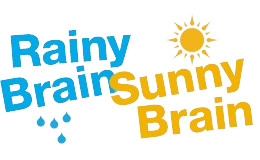Imagine stepping into a dark room, blindfolded, with nothing but your mind to guide you. How would you navigate through this unfamiliar space? This is where cognitive maps come into play, allowing you to mentally visualize the layout of your surroundings and make sense of the world without relying solely on your senses. But what exactly are cognitive maps, and how do they work? In this discussion, we will unravel the mysteries of cognitive maps in psychology, exploring their definition, functions, and fascinating applications in various fields. Get ready to embark on a journey of discovery as we unravel the intricate workings of the mind and how it maps our reality.
Definition of Cognitive Maps
A cognitive map, also known as a mental model, is a visual representation of an individual’s internal knowledge and understanding of the world and its events and processes. It serves as a framework for organizing and accessing information related to spatial cognition. Cognitive maps have their origins in the field of psychology, specifically in the study of human perception and spatial navigation. They provide an external representation of an individual’s internal cognitive processes, allowing for the examination of spatial knowledge and its construction.
The construction of cognitive maps has a neural basis, rooted in the circuitries of the hippocampal formation. Cells such as place cells and grid cells contribute to the formation and organization of cognitive maps. Animal studies suggest that similar cell types exist in the human hippocampus. Understanding the neural basis of cognitive maps helps us explain how individuals perceive and navigate their environment.
Cognitive maps are constructed through the acquisition, storage, and recall of information about places and environments. They are shaped by various factors such as age, worldview, ethnicity, gender, socioeconomic status, and journey-to-school. Representational strategies and externalization methods are examined to better understand how individuals develop and utilize their spatial knowledge.
Characteristics of Cognitive Maps
Cognitive maps, as visual representations of internal knowledge and understanding, possess distinct characteristics that contribute to their effectiveness in organizing and accessing spatial information. One important characteristic is the importance of visualization techniques in constructing cognitive maps. By visually representing information, individuals are able to better understand and organize spatial relationships. Another characteristic is the role of cognitive maps in problem solving. Cognitive maps help individuals navigate and solve problems by providing a mental framework for understanding spatial concepts and relationships. In addition, cognitive maps have various applications in education. They can be used to enhance learning and understanding of spatial concepts, and aid in the development of critical thinking skills. Furthermore, cognitive mapping techniques are valuable in user research. By using cognitive maps, researchers can gain insights into users’ mental models and decision-making processes. Finally, there is a relationship between cognitive maps and decision making. Cognitive maps provide individuals with a visual representation of options and consequences, allowing for more informed decision making. Overall, cognitive maps possess unique characteristics that make them valuable tools for organizing spatial information, problem solving, education, user research, and decision making.
Cognitive Maps in UX Design
To optimize user experience (UX) design, incorporating cognitive maps can enhance the organization and accessibility of spatial information. By utilizing user centered design principles, information architecture, and visual thinking, cognitive maps can provide a valuable tool for UX designers. Through user research and the understanding of mental models, cognitive maps can help designers create intuitive and user-friendly interfaces.
One way to incorporate cognitive maps in UX design is through the use of concept maps. Concept maps allow designers to identify relationships between different topics and organize information in a clear and hierarchical manner. This can help users navigate through complex systems and find the information they need more easily.
Another technique is the use of mind maps, which can be used to break down components on a webpage and plan subject topics within a website. Mind maps provide a visual representation of the different elements and how they are connected, allowing designers to create a more cohesive and intuitive user experience.
Incorporating cognitive maps in UX design can lead to improved user satisfaction and engagement. By understanding how users perceive and navigate through information, designers can create interfaces that are more intuitive and user-friendly. Through the use of cognitive maps, designers can enhance the organization and accessibility of spatial information, leading to a more seamless and enjoyable user experience.
Uses of Mind Maps in UX Design
Mind maps are a valuable tool in UX design for organizing information and enhancing user experience. They provide a visual way of organizing website content, planning webpage components, and enhancing knowledge and understanding. Here are some specific uses of mind maps in UX design:
- Visualizing information: Mind maps help in visualizing complex information by representing it in a clear and structured manner. This allows designers to easily digest and communicate information to stakeholders.
- Organizing website content: Mind maps are useful for organizing and categorizing website content. They enable designers to map out the different sections and pages of a website, ensuring a logical and intuitive user flow.
- Planning webpage components: Mind maps can be used to plan the components and layout of webpages. Designers can use mind maps to brainstorm ideas, arrange elements, and identify relationships between different components.
Benefits of Cognitive Maps
When it comes to UX design, utilizing cognitive maps offers a range of benefits that enhance the user experience. Cognitive maps improve memory by providing a visual representation of information, making it easier for users to recall and retain knowledge. These maps also enhance problem-solving skills by organizing complex concepts and relationships, allowing users to identify patterns and make connections more efficiently. Additionally, cognitive maps enhance creativity by stimulating the brain’s capacity for generating new ideas and insights. By visually representing information and relationships, cognitive maps aid in decision-making processes, allowing users to evaluate options and make informed choices. Finally, cognitive maps improve learning efficiency by presenting information in a structured and organized manner, facilitating comprehension and retention. Overall, incorporating cognitive maps in UX design not only improves the user experience but also enhances cognitive processes such as memory, problem-solving, creativity, decision-making, and learning efficiency.
Course Offerings on Study.Com
Study.com offers a diverse range of courses in various subjects, catering to different academic levels and providing career-focused options to enhance job prospects. Here are the key features of the course offerings on Study.com:
- Benefits of online learning:
- Study.com provides the convenience and flexibility of online learning, allowing you to learn at your own pace and schedule.
- You can access a wide range of courses from the comfort of your own home, saving time and money on commuting.
- Online learning provides opportunities for effective study techniques, such as self-paced learning, personalized feedback, and interactive resources.
- Importance of visualizations in learning:
- Study.com incorporates visualizations, such as interactive video lessons, mind maps, concept maps, and diagrams, to enhance understanding and retention of knowledge.
- Visualizations help in organizing and structuring information, making it easier to comprehend complex concepts.
- Cognitive maps play a crucial role in knowledge retention, as they provide mental representations that aid in recalling and applying information.
- Strategies for effective information organization:
- Study.com offers resources like study guides, flashcards, and practice quizzes that help you organize and consolidate information for better retention.
- The courses are designed with clear hierarchies, formats, and relationships between topics to facilitate effective information organization.
- Progress tracking features allow you to monitor your learning achievements, helping you identify areas that require further review and reinforcement.
Features of Study.Com
The features of Study.com encompass interactive learning materials, progress tracking, and a user-friendly interface. Study.com offers a wide range of advantages, including convenient and flexible learning options, access to expert instructors, and affordable pricing. With Study.com, you have the opportunity to learn at your own pace and access a variety of courses in subjects such as math, science, history, and more. The platform also provides career-focused courses to enhance job prospects, test prep courses for standardized exams, and professional development courses for lifelong learning. Study.com’s interactive video lessons and practice quizzes and exams ensure an engaging learning experience. Additionally, study resources like study guides and flashcards are available to support your learning journey. The progress tracking feature allows you to monitor your learning achievements, and the mobile app enables on-the-go learning. Success stories from Study.com users include improved grades, successful career transitions, higher test scores, enhanced knowledge and skills, and positive feedback. Overall, Study.com offers a comprehensive and effective learning platform with a user-friendly interface and a variety of learning options.
| Advantages of Study.com | Learning Options on Study.com | Expert Instructors on Study.com |
|---|---|---|
| Access to a wide range of courses | Convenient and flexible learning options | Access to expert instructors and resources |
| Opportunity to learn at your own pace | Various subjects available, including math, science, history, and more | Courses for different academic levels, from elementary to college |
| Affordable pricing options | Career-focused courses to enhance job prospects | Test prep courses for standardized exams |
| Professional development courses for lifelong learning |
Comparing Study.Com to Other Online Learning Platforms
To compare Study.com to other online learning platforms, it is important to consider the extensive course library, competitive pricing options, user-friendly interface, engaging learning materials, and positive reputation that sets Study.com apart.
- Extensive course library:
- Study.com offers a wide range of courses in various subjects, including math, science, history, and more.
- They cater to different academic levels, from elementary to college, providing comprehensive learning opportunities.
- Additionally, Study.com offers career-focused courses to enhance job prospects and test prep courses for standardized exams.
- Competitive pricing options:
- Study.com provides affordable pricing options compared to its competitors, making quality education accessible for all.
- They offer flexible subscription plans, including monthly and annual options, allowing learners to choose what suits their needs and budget.
- The cost-effective pricing ensures that learners can access high-quality education without breaking the bank.
- User satisfaction ratings:
- Study.com has garnered positive reputation and high user satisfaction ratings.
- Users have reported improved grades, successful career transitions, higher test scores, and enhanced knowledge and skills in specific subjects.
- The positive feedback and testimonials from satisfied users showcase the effectiveness and impact of Study.com’s learning platform.

